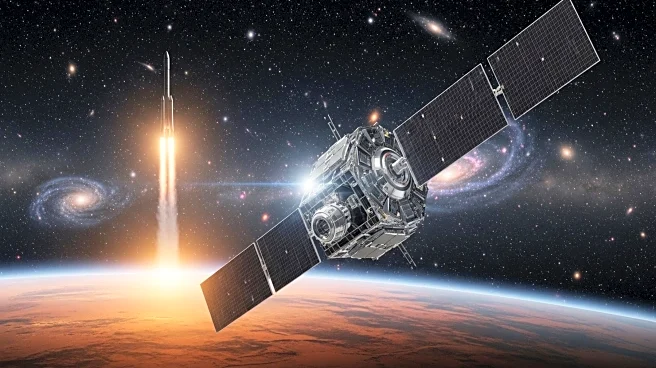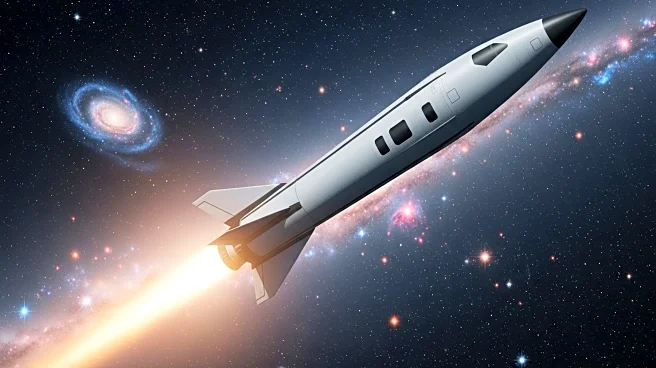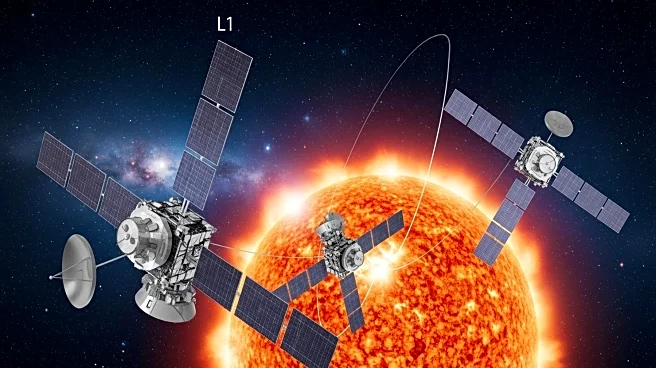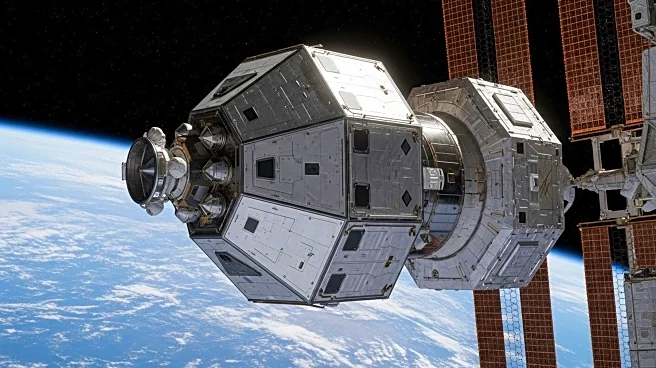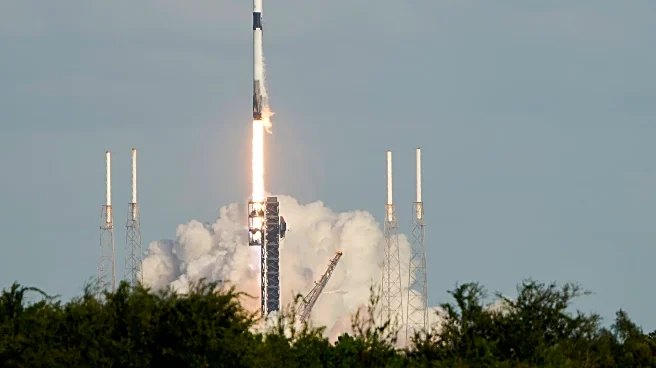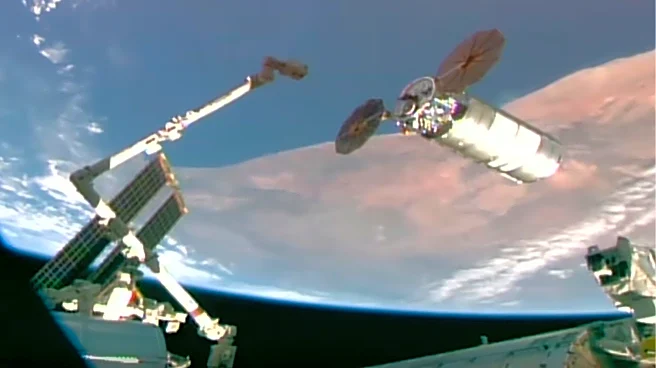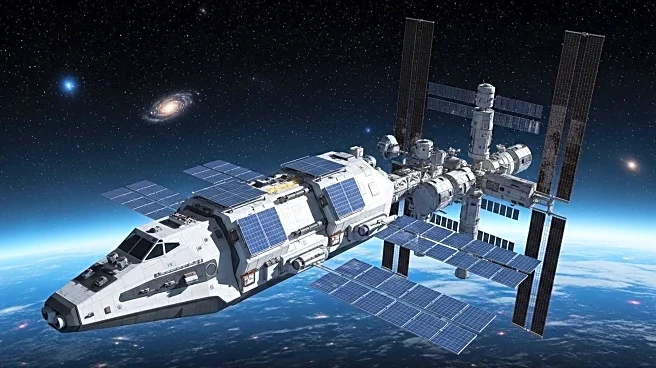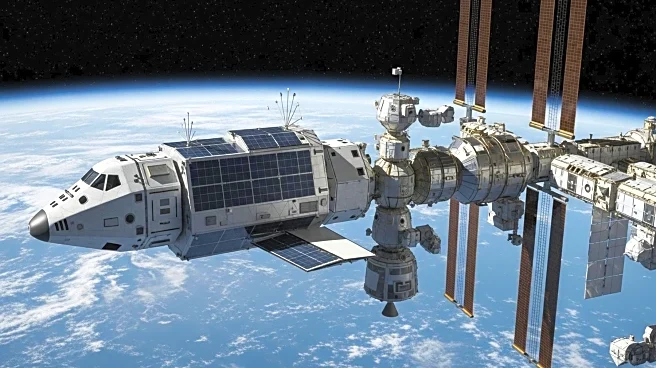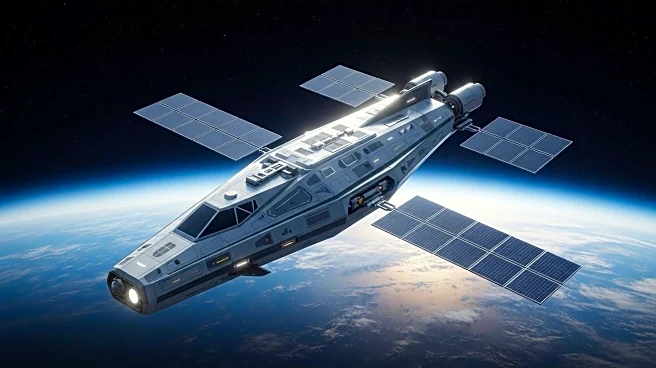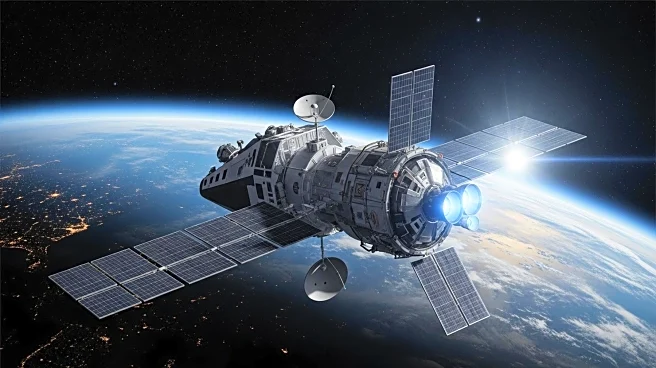What's Happening?
SpaceX launched 24 new Starlink satellites from California on September 19, marking its 84th Starlink mission of 2025. The Falcon 9 booster successfully landed, marking the company's 507th rocket recovery. Additionally, SpaceX agreed to purchase $17 billion in wireless spectrum from EchoStar to expand its Starlink service, aiming to eliminate mobile dead zones globally. NASA awarded Blue Origin a contract to deliver the VIPER lunar rover to the Moon's south pole in 2027, using the Blue Moon lander as part of the Artemis program. NOAA is preparing to launch a new space weather satellite, SWFO-L1, to replace aging solar sentinels. Meanwhile, Northrop Grumman's Cygnus XL cargo spacecraft successfully reached the ISS after resolving a software issue.
Why It's Important?
These developments highlight the growing influence of private companies in space exploration and telecommunications. SpaceX's spectrum acquisition positions it to enhance global connectivity, potentially disrupting traditional telecom industries. NASA's partnership with Blue Origin underscores the role of private industry in advancing lunar exploration, which could lead to significant scientific discoveries and resource utilization. NOAA's new satellite launch is crucial for maintaining space weather monitoring capabilities, protecting infrastructure from solar storms. The successful resolution of Northrop Grumman's cargo mission issue demonstrates the agility and reliability of commercial space operations, ensuring continuous support for the ISS.
What's Next?
SpaceX plans to continue expanding its Starlink constellation, with future launches expected to deploy larger satellites for improved network capacity. Blue Origin's VIPER mission is scheduled for 2027, aligning with NASA's Artemis timeline to establish a sustainable lunar presence. NOAA's SWFO-L1 satellite launch on September 23 will enhance space weather forecasting capabilities. Northrop Grumman will apply lessons from the Cygnus XL mission to future resupply missions, potentially increasing cargo capacity for the ISS. U.S. lawmakers are working to protect NASA's budget amid fiscal challenges, ensuring continued support for space exploration initiatives.
Beyond the Headlines
The space sector is increasingly becoming a domain of geopolitical competition, with U.S.-China tensions influencing policy decisions. NASA's restrictions on employing Chinese nationals reflect concerns over espionage and intellectual property protection. China's Belt and Road Initiative offers satellite launch services to developing nations, expanding its influence. Russia's plans for a domestic satellite constellation highlight its resolve to maintain sovereign internet coverage despite sanctions. The growing number of anti-satellite weapons in orbit raises concerns about space security, prompting calls for international cooperation to establish norms and prevent conflict.

